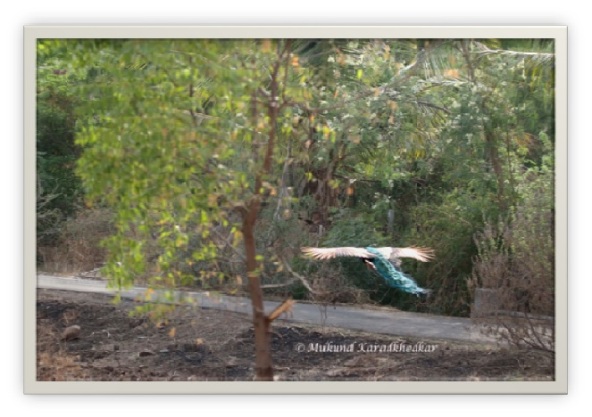
About Morachi Chincholi
Monsoon brings with itself a plethora of experiences and opens new horizons for a traveller and nature enthusiast. This isn’t surprising as it implies to all the creatures in nature as well. This is the season of procreation and reproduction for variety of different species from insects to birds. Monsoon gives rebirth to the components of ecosystem, that have been flushed out by harsh and dry summers. It’s the time for new green shoots of grass which covers entire landscapes and mountains with their lush green colour and texture. This description of monsoon is incomplete without a hot, spicy meal in the laps of nature. We can actually hear the variety of birds chirp around you and see the peacock dancing, fanning out the feathers, displaying the magnificent plumage to attract peahens. It suddenly starts to rain and as a spectator, I am enthralled to witness this epic display of nature.
This all can be actually experienced at “Morachi Chincholi” Very popular picnic spot for nature lovers & shutterbugs. The place has lots of Tamarind Trees & lots of peacocks hence it is called as “Morachi Chincholi” in Marathi.

How to reach
It is around 50 KM from Pune. There are two routes to reach this place.
If you are starting from Bhosari, Aundh, Nashik phata, Khadki or Chinchwad it is around 40KMs drive.
a) Drive on Pune-Nasik highway (NH50) up to Rajgurunagar ( Khed ). Turn right from Rajgurunagar towards Khed – Shikrapur. Drive straight towards –> Kanhesar –> Pabal –> Morachi Chincholi.
There are also other routes to reach Morachi via Alandi or via Shikrapur.



Indian Peafowl : Green Peafowl / White Peafowl
Binomial name is Pavo Cristatus. Peacocks are omnivores. They eat termites, ticks, plant parts, locusts, ants, mice, scorpions, flower petals, seed heads, and other reptiles, arthropods and amphibians. Peacocks are quite sociable birds. Peacocks can fly for short distances. A wingspan of peacock can be of six feet. A young peacock is called a peachick. Peacocks’ lifespan is up to 20 years.
The males use their sparkling tail display, containing large, small feathers, in their manly maneuver for the best mate. The train of feathers is supported by smaller, shorter tail feathers. These colorful tail feathers do not develop till the peacock is three years old, and the trains are shed yearly, usually during the winter months. Males make loud weeping cries, when detects any risk approaching.
Their sparkling tail gets shed in winter, so one can see all the peacocks without feather till February. It start developing after that & completes in rainy season when peacock marches to have a mate.
When a peacock feels like to have a mate, he will show his train and march by the nearest female [peahen], puffing out his chest and shaking his tail feathers. During mating period, the peafowl are also very vocal, making “minh-ao” cries that can sound like a kitten. Mating season coincides with the monsoon season.

Resorts in Morachi Chincholi
Once you reach Morachi Chincholi, you will be able to see lots of Agro Tourism resorts like Mayur Baug, Mauli Krushi Paryatan, Jai Malhar Krushi Paryatan etc.
Overall this place is serene village life experience very close to urban city.
The resorts here are nice place to visit for a day with family and friends. There are many games and shows for both kids and grown up people. Food is nice with all the Maharashtrian dishes. Off course the Peacock is main attraction.
Best Time to visit is June to September. You will be able to see Peacocks with complete grown up colourful feathers as seen in above picture. All the resorts have tractor ride as a part of their package & this ride takes you to nearby places in the surrounding fields & houses. You will see lots of Peacocks & Peahens. I got a chance to click one Peacock in flight. It was heavenly experience to watch.

We have stayed in Mauli Krushi Paryatan Kendra, it is MTDC approved Agro Tourism Resort and we were satisfied with the arrangements. Below are some pics from the resort.
Mauli Krushi Paryatan Kendra ; Contact Nos. 07507602271 & 7020652790. It is advisable that you book the resort in advance so that better preparations can be made.



Apart from dancing peafowls, you can also see lots of beautiful birds. This place has huge tamarind trees & mango trees. We could spot Oriental White Eye, Red Vented Bulbul, Indian Robbin, Brahminy Starling and Golden Oriole and White Breasted Kingfisher. You can see some the bird pics below.

Oriental White Eye enjoying semi ripe mangoes direct from the tree.

Overall it is refreshing & energizing experience.

Beautiful sir
LikeLike
Most awaited… Superb sir 🙂
LikeLike
Wonderful writeup and information
LikeLike
Nice pics sir…
Heard lots of time @ this place. But now looking at pics thinking to visit it …
LikeLike
This is the right season for visiting.
LikeLike
Good info. Good website
LikeLike
Very nice snaps and collective information. You are always be inspiration for many of us.
Nice.
LikeLike
Thanks dear
LikeLike